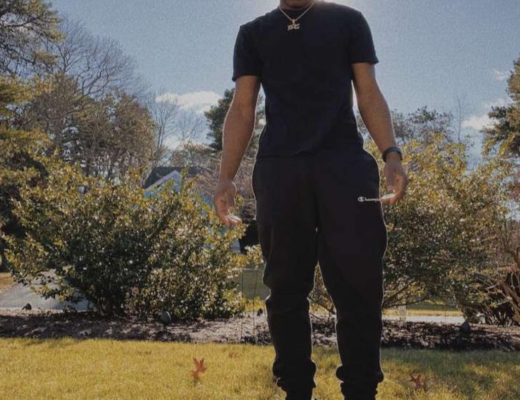Starting as a songwriter and attempting to decipher that magic that went into crafting the lyrics to some of your favourite songs of all time is no easy feat. There are multiple nuances to consider, along with numerous rudiments.
For many, the daunting process is often plagued with imposter syndrome and sheer confusion – but it doesn’t need to be. Once you have the fundamentals and the faux pas figured out, you will have free reign over your lyrical style.
The rules for structuring lyrics tend to vary by genre, so rather than giving genre-specific advice, we have covered the foundations that every songwriter will want to cover before perfecting them for their preferred genre.
How to Structure a Song Lyrically
- Get the Basis of Your Song First
This step will sound obvious to some, but there is no understating its importance. If you attempt to sit down and mechanically write a song without any idea of the phenomena or feeling you want to explore, you are already off on the wrong foot. Sure, writer’s block can leave you a little uninspired from time to time – which is why it is a vital part of the artist’s journey to seek inspiration. There are few limits on where you can find your inspiration.
From poetry to films to art to music to an epiphany you have just had to the latest atrocity on the news that left you inspired to pick up a pen or fire words onto your laptop. It doesn’t matter how clever the words sound if your heart and soul aren’t in it. Avoid superficial sentiments at all costs.
Before you start to form your verses, let the emotion pour in poetic verses with little thought to end syllables. The trick here is to let the emotion flow by drawing on your senses and playing with metaphors. This stage should feel like an unfiltered stream of consciousness. There’s always time to edit later!
- Take Influence from Your Favourite Artists
Even if you know the lyrics by heart from your favourite songs, spend time studying how the lyrics appear in the written word by looking them up. Take note of the simplicity of the language, the use of repetition and the tendency to cut words here and there to make the verses flow better. You may also note how the chorus always emphasises the overarching essence of the single, while the verses build the anticipation and set the scene for the chorus. The main takeaway from the single should always be nestled into the chorus along with the hook.
There is a stark difference between taking notes from another artist’s work and pilfering their creativity. And no matter how much you’re influenced by a certain artist’s lyrical style, remember that you also have to find your own unique voice – just like they did. The airwaves are crying out for authenticity, not assimilation.
- Make Your Lyrics Conversational
One of the best tips for new songwriters to note is the importance of writing as you speak and using the language you use to have meaningful conversations. A bit of poetic flair here and there never hurt anyone; Hello Morrissey, but it is important to make sure that your lyrics aren’t too abstract that the listener can’t decipher the original meaning. One of the best ways to ensure that you haven’t veered into the lofty territory is to always keep hold of what you originally wanted to say.
- Decide on The Structure
It is completely up to you whether you want to create an intro to your song; if you do, keep the melody or the beat simple and keep the lyrics sparse. The main part of your song will be the verses, which can be up to twice as long as the chorus. Throughout your verses, keep the melody the same but switch up the lyrics. Typically, you should have 2 – 3 verses that are 16-bars long. However, they should always appear before and after the chorus.
When writing the chorus, make sure that it is the catchiest part of the song with an instrumental or a vocal hook and ensure that the chorus lyrics always appear unchanged between choruses.
If you are feeling brave, you can choose to add pre-choruses to your song; as the name indicates, it will go before the chorus. You can also consider adding a verse after the second chorus. Usually, there are stark differences between bridges and the rest of the song. Lyrically, as a rule of thumb, keep it succinct, and take it as an opportunity to lead to a change in key.
- Always Keep the Music in Mind
When writing your lyrics, keep in mind the canter of the bars, and be incredibly mindful of where you may need to pause and take a breath. Once you have a nice and smooth flow that fits with the melody, consider how your end rhymes will resonate. Always refrain from excessive use of simplistic or one syllable end rhymes. Less is more when it comes to end rhymes. And no one needs to hear home rhymed with alone again. All end syllable rhymes should sound organic instead of painfully intentional.
–
Once you have learned the fundamentals of structuring song lyrics, feel free to break the rules and play around to find your distinctive lyricism style. Never be afraid to get experimental. Some of the best lyricists run with their unorthodox ingenuity. Take Amanda Palmer and her 100mph syllabicity, Richey Edwards of the Manic Street Preachers and his razor-sharp cutting lines and Amigo with his endlessly meta tenacity for the perfect example.
If you’re looking for feedback on one of your latest releases or want to put more hype behind one of your new singles, consider A&R Factory for your songwriter promotion. Our award-winning blog has a high readership amongst industry professionals and staunch music fans looking for fresh new material to resonate with.




No Comments